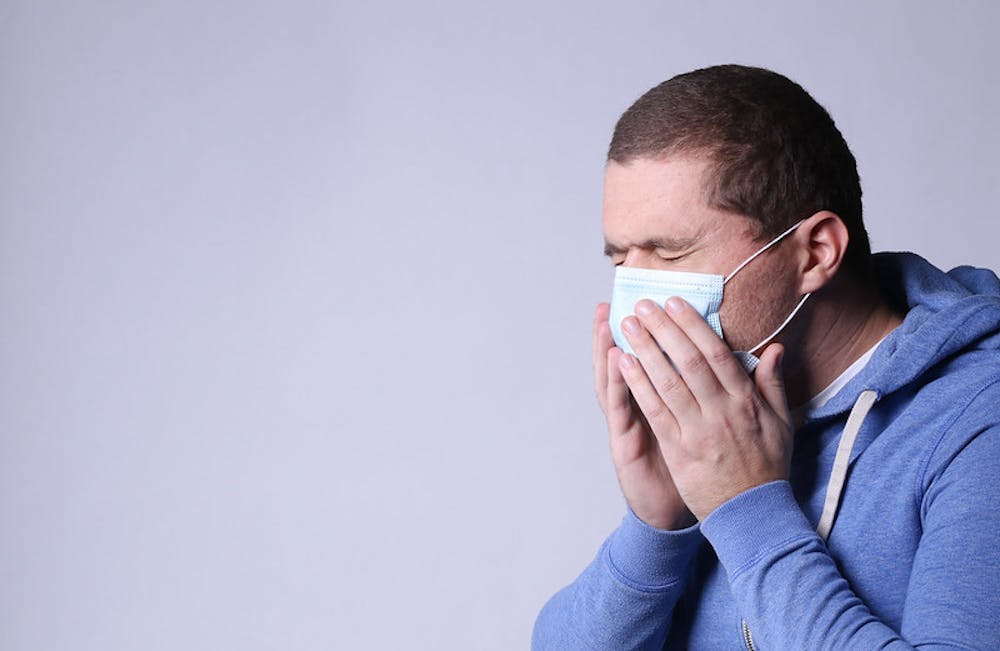
As the COVID-19 pandemic rages on, respiratory symptoms such as fatigue, dyspnea, chest pain and cough are some of the most common post-COVID symptoms among both hospitalized and non-hospitalized patients. As such, the Centers for Disease Control and Prevention (CDC) has been working to improve its identification of symptoms and diagnoses experienced by patients with persistent respiratory conditions post-COVID.
A 2020 study of recovered COVID-19 subjects — 80.2% of which experienced mild cases involving home isolation — found that 72.8% of participants suffered from fatigue, 28.2% from dyspnea and 28.9% from chest pain.
In an interview with The News-Letter, Dr. Panagis Galiatsatos, a pulmonary and critical care medicine physician at the School of Medicine, detailed how the lungs are distinctly impacted by COVID-19 and its variants.
According to Galiatsatos, the lungs consist of three major components: lung tissue, where the exchange of oxygen and carbon dioxide occurs; the airways, where the air is taken in and removed; and the blood supply.
Galiatsatos highlighted that COVID-19 can affect each of these three components, depending on the variant that caused the infection.
“The earlier variants, Alpha through Delta, were much more lung tissue impacting. That’s where you saw a lot of patients, for instance, really struggling with low oxygen levels or with a lot more predominant, dry cough. With Omicron and its sub-variants, this seems to be more of an airway disease,“ he said. “From that standpoint, it seems to cause a lot more productive coughing, so patients will complain a lot more of phlegm production, and will also cause a lot more upper respiratory symptoms.”
In addition, he emphasized that variants affecting the airways can worsen existing airway disease among patients with such conditions. Variants like Omicron provoke symptoms similar to bronchitis, including excess mucus production, but lack the intense bouts of pneumonia and breathlessness that accompanied earlier variants.
Galiatsatos clarified the manifestation of certain post-COVID respiratory symptoms has less to do with the severity of the patient’s initial COVID-19 infection than the disease’s variants.
“With the current [variants], since they’re much more airway predominant, the big symptom that I see afterward is a lot more post-viral coughing, coughing that three to six months later, that continues,“ he said. “That’s the part I would say is probably the most concerning because that cough can cause a lot of ambiguity related stress of, ‘Do I have COVID, do I not have COVID?’”
Although there has been an investigation into the potential risk factors associated with long COVID, Galiatsatos shared that there is still a great deal of unpredictability surrounding the factors that influence the development of persistent post-COVID respiratory symptoms.
He discussed the treatment of post-COVID respiratory symptoms, emphasizing the importance of individualized treatment plans. These plans begin with a detailed patient workup to best understand the patient’s experiences in order to effectively manage the symptoms.
“There are certain agents that we can use to help the symptoms. There are certain inhalers that are much more effective against a cough than others. There are certain oral medications that are much more effective against nasal congestion than others,“ Galiatsatos said. “Talk to your doctor, discuss what symptoms are really inconveniencing.”
He also pointed out that lingering symptoms can be a part of healing.
“Your airways that got injured want to clear a lot of the dead cells out so it’ll make you cough. These are symptoms that are really just related to healing, and you’ll find every week they get a little bit better and less severe,” he said.
In light of Galiatsatos’ comments, it may seem difficult to decide when to seek treatment for persistent symptoms. Yet, Galiatsatos also stressed that this decision is ultimately a personal one and should rely on a patient’s own assessment of his or her endurance levels and ability to complete simple tasks.
Considering the University’s recent encouragement to receive the bivalent COVID-19 vaccine, I asked Galiatsatos for his insight into whether there is a relationship between a person’s vaccination status and the likelihood they will develop persistent respiratory symptoms related to long COVID.
“The vaccines can help curb the impact COVID has on you and the potential posed complications,“ he said. “The vaccines will help, but it doesn’t mean being dismissive of other factors that should help… such as mask-wearing and good physical distancing.”
Deanna Rahman is a senior from Westchester, N.Y. majoring in Medicine, Science and the Humanities and minoring in Anthropology and Spanish for the Professions. “In for the Long Haul” aims to investigate and increase awareness about COVID-19’s impact on physical health, mental and emotional well-being and the functioning of society as a whole.





